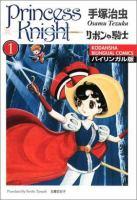
In the mid-twentieth century, a new kind of hero emerged, filling the pages of hugely successful commercial comic books. Representing traditional values and ideals in a changing world, they compensated for the insecurities and fears of modernity. The most famous and successful took the forms of adventurers, investigators, and cowboys in France and Belgium; superheroes with double identities in the US; and cyborgs and cross-dressing heroines in Japan. Fans fell in love with these heroes’ encounters and transformations, and through their dramatic victories were drawn to inhabit a comforting, timeless loop of idealized characters and settings.
 Of the many enduring heroes who captured the admiration and imagination of the United States in the twentieth century, the vast majority were created by the "Big Two," Marvel and DC Comics. DC continues to be known for the heroes Superman and Batman (1938 and 1939), while Marvel’s pantheon came on the scene from 1961-1963. While American heroes occupied their own niche, the down-to-earth European heroes like Hergé’s Tintin or spoofs like the cowboy Lucky Luke left themselves more open to comedy and narratives based in more realistic settings. Fan-favorites of manga that emerged in postwar Japan were the progenitors of the now famed archetypes of robot, animal, and cross-dressing heroes. Osamu Tezuka, the “god of manga,” invented most of these modern genres, including the female cross-dressing hero in Ribon no Kishi in 1955. InuYasha (1996) conceived by the female mangaka Rumiko Takahashi, stands as emblematic of the mainstream nature of women creators and readers in the manga realm.
Of the many enduring heroes who captured the admiration and imagination of the United States in the twentieth century, the vast majority were created by the "Big Two," Marvel and DC Comics. DC continues to be known for the heroes Superman and Batman (1938 and 1939), while Marvel’s pantheon came on the scene from 1961-1963. While American heroes occupied their own niche, the down-to-earth European heroes like Hergé’s Tintin or spoofs like the cowboy Lucky Luke left themselves more open to comedy and narratives based in more realistic settings. Fan-favorites of manga that emerged in postwar Japan were the progenitors of the now famed archetypes of robot, animal, and cross-dressing heroes. Osamu Tezuka, the “god of manga,” invented most of these modern genres, including the female cross-dressing hero in Ribon no Kishi in 1955. InuYasha (1996) conceived by the female mangaka Rumiko Takahashi, stands as emblematic of the mainstream nature of women creators and readers in the manga realm.


